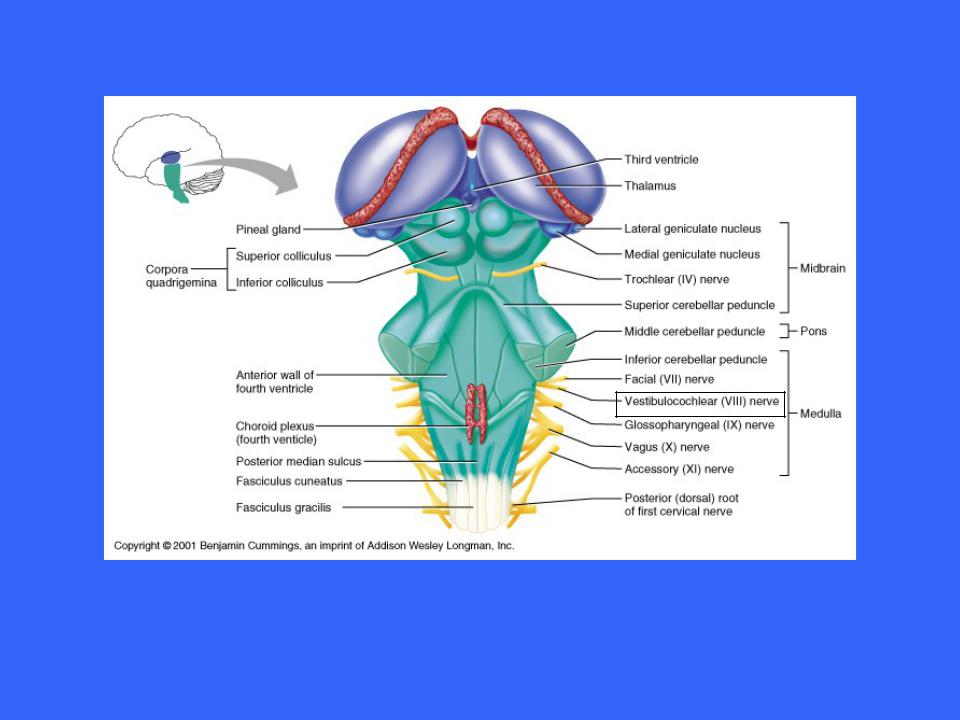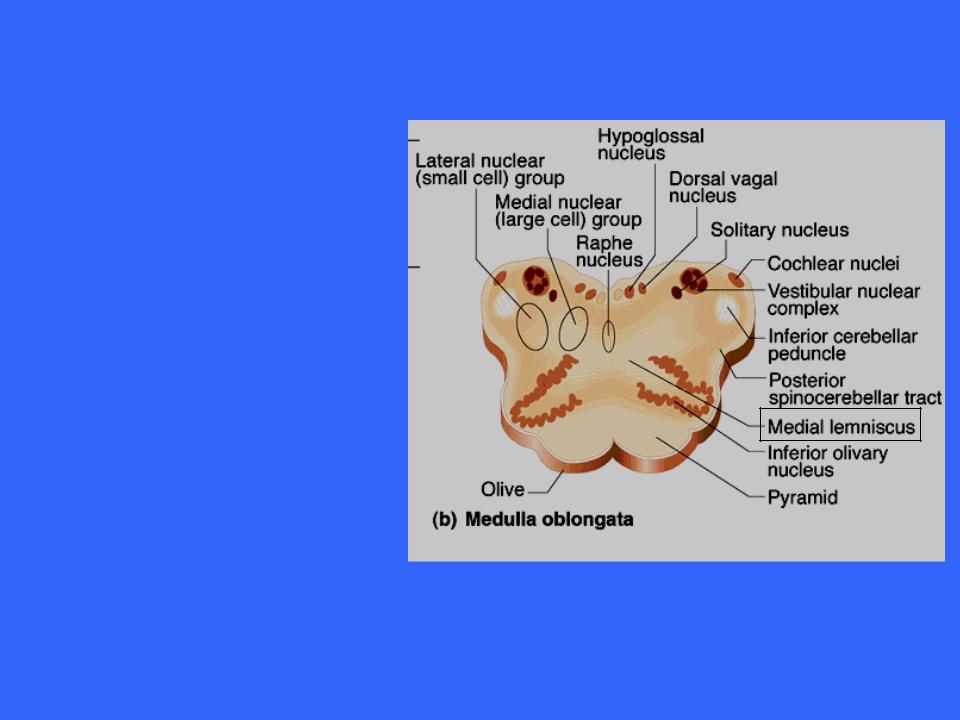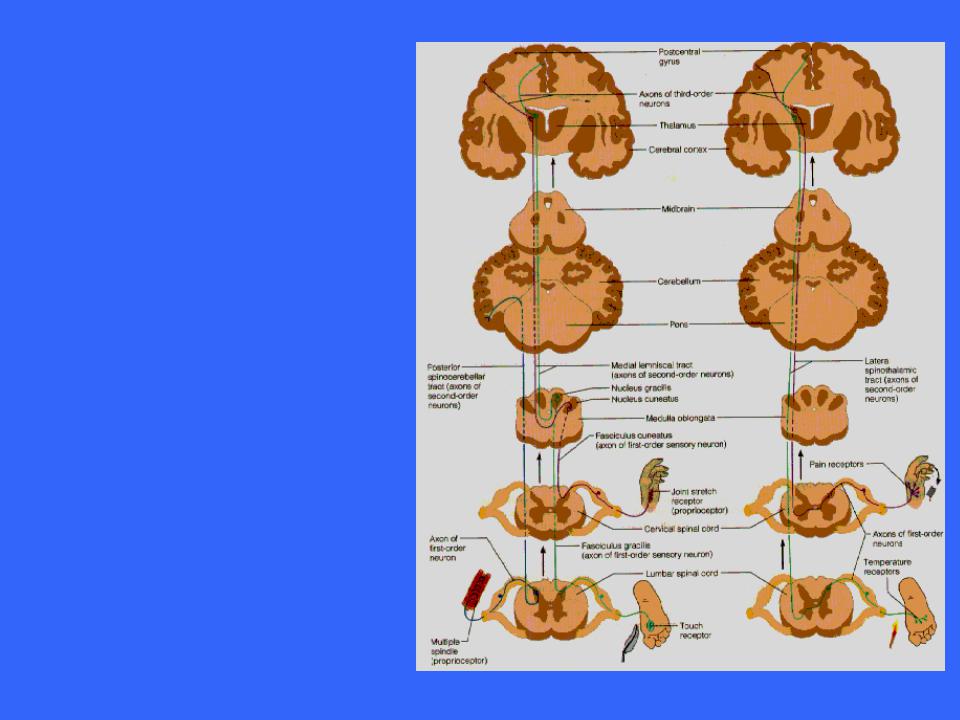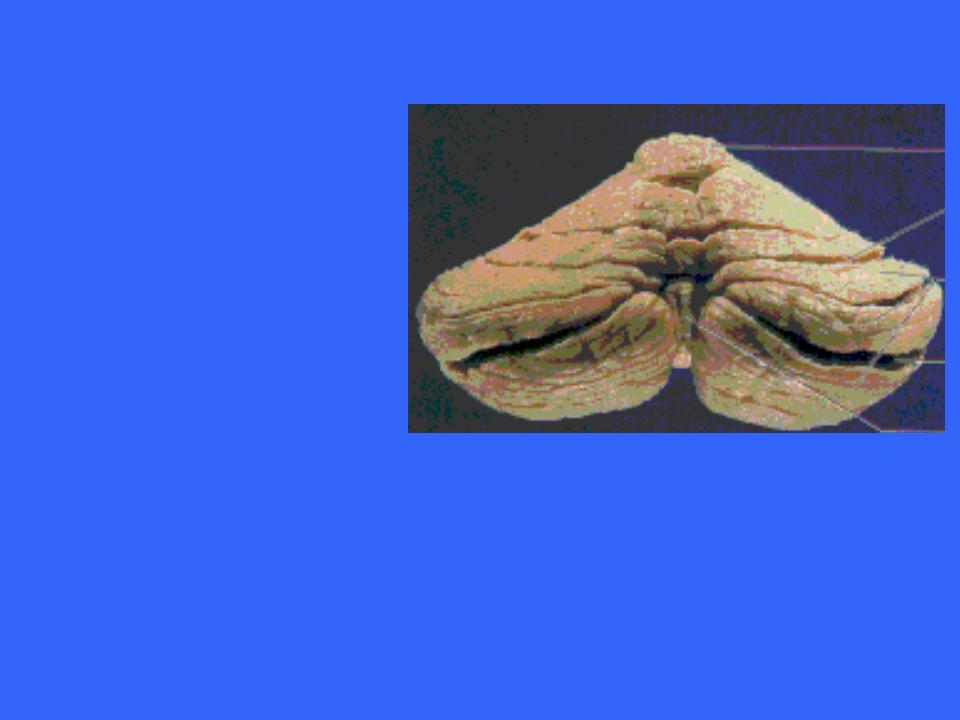
- •Central Nervous System
- •Introduction
- •The Brain
- •The Brain
- •Embryonic Development
- •Embryonic Development
- •Development of Neural Tube
- •Development of Neural Tube
- •Development of Neural Tube
- •Development of Neural Tube
- •Primary Brain Vesicles
- •Secondary Brain Vesicles
- •Secondary Brain Vesicles
- •Secondary Brain Vesicles
- •Secondary Brain Vesicles
- •Secondary Brain Vesicles
- •Secondary Brain Vesicles
- •Adult Neural Canal Regions
- •Development of Flexures
- •Effects of Space Restriction
- •Effects of Space Restriction
- •Effects of Space Restriction
- •Effects of Space Restriction
- •Regions of the Brain
- •Gray and White Matter in CNS
- •Gray and White Matter in CNS
- •Gray and White Matter in CNS
- •Ventricles of the Brain
- •Ventricles of the Brain
- •Ventricles of the Brain
- •Ventricles of the Brain
- •Ventricles of the Brain
- •Ventricles of the Brain
- •Ventricles of the Brain
- •Ventricles of the Brain
- •The Cerebral Hemispheres
- •The Cerebral Hemispheres
- •The Cerebral Hemispheres
- •Lobes of Cerebral Hemispheres
- •Lobes of Cerebral Hemispheres
- •Fissures of Cerebral Hemispheres
- •Medial Surface of Right Hemisphere
- •Position of Cerebral Hemispheres
- •Cerebral Cortex
- •Cerebral Cortex
- •Cerebral Cortex
- •Cerebral Hemispheres
- •Cerebral Cortex
- •Cerebral Cortex Generalizations
- •Cerebral Cortex Generalizations
- •Motor Areas
- •Primary Motor Cortex
- •Pyramidal cells
- •Pyramidal Tracts
- •Motor
- •Motor
- •Motor
- •Premotor Cortex
- •Premotor Cortex
- •Premotor Cortex
- •Premotor Cortex
- •Broca’s area
- •Broca’s area
- •Frontal Eye Field
- •Sensory Areas
- •Primary Somato sensory Cortex
- •Synaptic Chain
- •Primary Somato sensory Cortex
- •Motor and Sensory Somatotopy
- •Primary Somato sensory Cortex
- •Primary Somato sensory Cortex
- •Primary Somatosensory Cortex
- •Somatosensory
- •Somatosensory
- •Somatosensory
- •Primary Visual
- •Primary Visual Cortex
- •Primary Visual
- •Primary Visual
- •Primary Visual Cortex
- •Visual Association
- •Visual Association
- •Visual Association Area
- •Visual Association Area
- •Visual Association Area
- •Visual Association Area
- •Visual Areas
- •Primary Auditory Cortex
- •Primary Auditory Cortex
- •Auditory Association Area
- •Auditory Association Area
- •Auditory Association Area
- •Gustatory (taste) Cortex
- •Vestibular (equilibrium) Cortex
- •Olfactory Area
- •Olfactory Area
- •Olfactory Area
- •Olfactory Area
- •Olfactory Area
- •Olfactory Area
- •Association Areas
- •Association Areas
- •Prefrontal Cortex
- •Prefrontal Cortex
- •Prefrontal Cortex
- •Prefrontal Cortex
- •Prefrontal Cortex
- •Prefrontal Cortex
- •Prefrontal Cortex
- •Prefrontal Cortex
- •Prefrontal Cortex
- •Prefrontal Cortex
- •Prefrontal Cortex
- •General Interpretation Area
- •Language Area
- •Language Area
- •Language Area
- •Insula
- •Lateralization of Cortical Function
- •Lateralization of Cortical Function
- •Lateralization of Cortical Function
- •Lateralization of Cortical Function
- •Cerebral White Matter
- •Cerebral White Matter
- •Cerebral White Matter
- •Cerebral White Matter
- •Cerebral White Matter
- •Cerebral White Matter
- •Cerebral White Matter
- •Cerebral White Matter
- •Basal Nuclei
- •Basal Nuclei
- •Basal Nuclei
- •Basal Nuclei
- •Basal Nuclei
- •Basal Nuclei
- •Basal Nuclei
- •Basal Nuclei
- •Basal Nuclei
- •Basal Nuclei
- •Basal Nuclei
- •The Diencephanlon
- •The Diencephalon
- •The Diencephalon
- •Thalamus
- •Thalamus
- •The Thalamus
- •Thalamus
- •Thalamus
- •Thalamus
- •Thalamus
- •Thalamus
- •Thalamus
- •The Hypothalamus
- •Hypothalamus
- •Mammillary Bodies
- •Hypothalamus
- •Hypothalamus
- •Autonomic Control Center
- •Center for Emotional Response
- •Center for Emotional Response
- •Body Temperature Regulation
- •Body Temperature Regulation
- •Body Temperature Regulation
- •Regulation of Hunger & Thirst
- •Regulation of Water Balance
- •Regulation of SleepWake Cycles
- •Regulation of SleepWake Cycles
- •Control of Endocrine Functioning
- •Formation of Memory
- •Epithalamus
- •The Epithalamus
- •Epithalamus
- •The Epithalamus
- •The Brain Stem
- •The Brain Stem
- •The Brain Stem
- •The Midbrain
- •The Midbrain
- •The Midbrain
- •The Midbrain
- •The Midbrain
- •The Midbrain
- •The Midbrain
- •The Midbrain
- •The Midbrain
- •The Midbrain
- •The Midbrain
- •The Midbrain
- •The Midbrain
- •The Midbrain
- •The Midbrain
- •The Midbrain
- •The Midbrain
- •The Pons
- •The Pons
- •The Pons
- •The Pons
- •The Pons
- •The Pons
- •The Medulla Oblongata
- •The Medulla Oblongata
- •The Medulla Oblongata
- •The Medulla Oblongata
- •The Medulla Oblongata
- •The Medulla Oblongata
- •The Medulla Oblongata
- •The Medulla Oblongata
- •The Medulla Oblongata
- •The Medulla Oblongata
- •The Medulla Oblongata
- •Medulla
- •The Medulla Oblongata
- •The Medulla Oblongata
- •The Medulla Oblongata
- •The Medulla Oblongata
- •The Medulla Oblongata
- •The Medulla Oblongata
- •The Cerebellum
- •The Cerebellum
- •The Cerebellum
- •The Cerebellum
- •The Cerebellum
- •The Cerebellum
- •The Cerebellum
- •The Cerebellum
- •The Cerebellum
- •The Cerebellum
- •The Cerebellum
- •The Cerebellum
- •The Cerebellum
- •The Cerebellum
- •The Cerebellum
- •The Cerebellum
- •The Cerebellum
- •The Cerebellum
- •The Cerebellum
- •The Cerebellum
- •The Cerebellum
- •The Cerebellum
- •Cerebellar Processing 1
- •Cerebellar Processing 2
- •Cerebellar Processing 3
- •Cerebellar Processing 4
- •The Cerebellum
- •The Cerebellum
- •Functional Brain Systems
- •The Limbic System
- •The Limbic System
- •The Limbic System
- •The Limbic System
- •The Limbic System
- •The Limbic System
- •The Limbic System
- •The Limbic System
- •The Limbic System
- •The Limbic System
- •The Limbic System
- •The Limbic System
- •The Limbic system
- •The Limbic System
- •The Limbic System
- •The Reticular Formation
- •The Reticular Formation
- •The Reticular Formation
- •The Reticular Formation
- •The Reticular Formation
- •The Reticular Activating System
- •Reticular Formation
- •The Reticular Activating System
- •The Reticular Formation
- •Protection of the Brain
- •Meninges
- •Meninges
- •Meninges
- •Meninges
- •The Dura Mater
- •The Dura Mater
- •The Dura Mater
- •The Dura Mater
- •The Dura Mater
- •The Dura Mater
- •The Dura Mater
- •The Arachnoid Mater
- •The Arachnoid Mater
- •The Arachnoid Mater
- •The Pia Mater
- •Cerebrospinal Fluid (CSF)
- •Cerebrospinal Fluid (CSF)
- •Choroid Plexus
- •Choroid Plexus
- •Choroid Plexus
- •The Choroid Plexus
- •CSF Circulation
- •CSF Circulation
- •BloodBrain Barrier
- •BloodBrain Barrier
- •BloodBrain Barrier
- •BloodBrain Barrier
- •BloodBrain Barrier
- •Homeostatic Imbalances
- •The Brain

The Medulla Oblongata
The fibers of the vestibulocochlear synapse with the cochlear nuclei which receive information on auditory inputs

The Medulla Oblongata
Also housed within the medulla are several nuclei associated with ascending sensory tracts
The most dominant of these are the dorsally located nucleus gracilis and nucleus cuneatus associated with the medial lemniscal tract

Medulla
Oblongata
These serve as relay nuclei in a pathway by which general somatic sensory information ascends from the spinal cord to the somatosensory cortex

The Medulla Oblongata
The medulla has a critical role as an autonomic reflex center involved in maintaining body homeostasis
–The cardiovascular center
–The respiratory centers
–Other centers

The Medulla Oblongata
The cardiac center
–The cardiac center adjusts the force and rate of heart contraction to meet bodily needs

The Medulla Oblongata
The vasomotor center
–The vasomotor center regulates blood pressure by acting on smooth muscle in the walls of the blood vessels to effect changes in blood vessel diameter
–Vasoconstriction causes blood pressure to rise; dilation reduces blood pressure

The Medulla Oblongata
The respiratory centers
–The medullary respiratory centers control the rate and depth of breathing and maintains respiratory rhythm

The Medulla Oblongata
Other centers
–Additional centers regulate activities such as
•Vomiting
•Hiccuping
•Swallowing
•Coughing
•Sneezing

The Medulla Oblongata
Many functions of the medulla overlap with those attributed to the hypothalamus
The overlap is easily explained
The hypothalamus exerts its control over most visceral functions by relaying its instructions through the medulla’s reticular centers (within the Medulla oblongata) which carry them out

The Cerebellum
The cerebellum is exceeded in size only by the cerebrum
It accounts for about 11% of total brain mass
